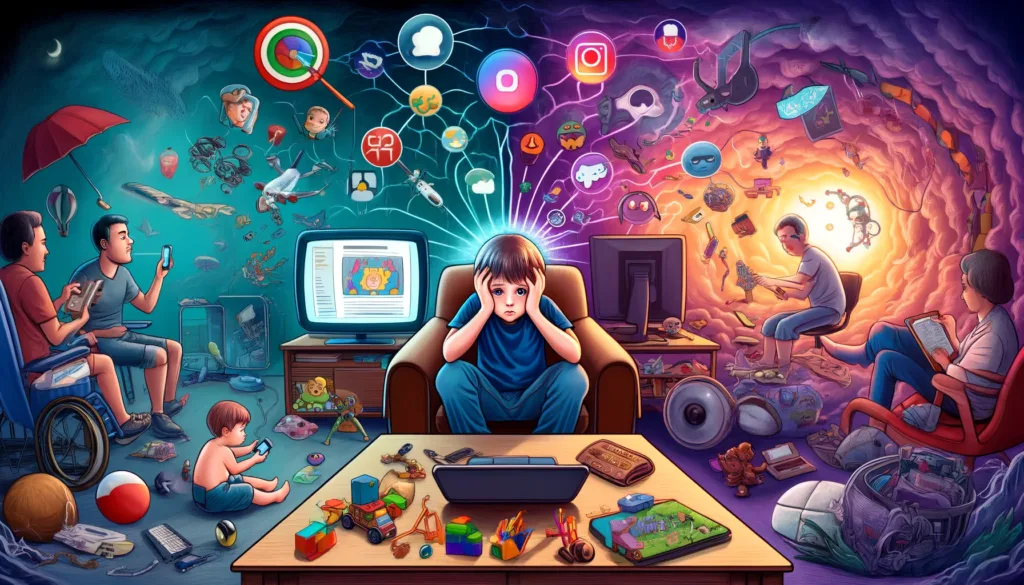In a world where digital distractions are omnipresent, boredom has become a rare experience for children. Yet, it is crucial to rediscover the importance of boredom. Let your kids get bored! Boredom is not an enemy to avoid but a valuable ally for their personal and creative development. Let’s explore why it is essential to allow children to experience boredom and how it can help them grow.
Boredom: A Fertile Ground for Creativity
Boredom is often perceived negatively, as a state to be avoided at all costs. However, it plays a fundamental role in children’s development. When children are bored, they are prompted to use their imagination to create games, solve problems, and explore new ideas. Boredom stimulates their creativity, pushing them to invent stories, build imaginary worlds, and find innovative solutions to their everyday concerns.
The Importance of Boredom
Research in psychology and neuroscience shows that boredom has beneficial effects on the brain. Here are some scientific reasons highlighting the importance of boredom:
Cognitive Development:
Boredom encourages children to think independently and develop problem-solving skills. When faced with boredom, they must find creative ways to occupy themselves, stimulating their brains and enhancing their critical thinking abilities.
Emotional Management:
Learning to manage boredom helps children develop their tolerance for frustration and emotional resilience. They learn to cope with situations where immediate gratification is not available, which is essential for their emotional balance.
Attention Development:
Boredom allows children to focus on prolonged activities without interruption. This helps improve their ability to maintain attention and concentrate on complex tasks, essential skills for their academic and personal success.

Boredom in a Hyper-Connected World
In our hyper-connected society, children are often overwhelmed by a deluge of digital stimuli. Screens, video games, and social media provide constant distractions, leaving little room for boredom. This digital saturation can have detrimental effects on their development:
Dependence on External Stimuli:
Children become reliant on external distractions for entertainment, which diminishes their ability to find independent activities and occupy themselves alone.
Reduction in Creativity:
Continuous exposure to pre-defined content limits their imagination and ability to invent. They become passive consumers rather than active creators.
Impact on Mental Health:
The constant need for digital stimulation can lead to anxiety and stress. Children may struggle to relax and appreciate moments of calm.
Active vs. Passive Screen Use
Active screen use involves meaningful interaction with content, such as solving problems, creating projects, or learning new skills. In contrast, passive screen use is characterized by consuming content without interaction, such as watching videos or scrolling through social media.
Promoting Active Screen Use
It is crucial to promote active screen use among children. Encouraging the use of educational and interactive applications can turn screen time into opportunities for learning and development. While this does not completely replace non-digital activities, it is a significant step towards a more beneficial use of technology. Learning applications, for instance, stimulate critical thinking, imagination, and skill acquisition, providing a constructive alternative to passive content consumption.

Relearning How to Be Bored
1. Limit Screen Time
Set specific time slots for screen use. Encourage your children to adhere to these limits so they have free time for other activities.
2. Encourage Non-Digital Activities
Propose activities such as reading, drawing, board games, or outdoor activities. These screen-free moments allow children to develop their creativity and social skills.
3. Create Disconnect Periods
Establish regular disconnect times where the entire family puts away electronic devices. Use this time to spend together, talk, or simply enjoy the quiet.
4. Provide Creative Materials
Offer your children materials like crayons, paints, clay, or building blocks. Let them explore and create freely without specific instructions.
5. Be a Role Model
Set an example by limiting your own screen time and engaging in non-digital activities. Children learn a lot by observing the adults around them.
6. Encourage Autonomous Exploration
Allow your children to get bored without immediately intervening to entertain them. Encourage them to find ways to occupy themselves and explore their environment.
7. Promote Social Interactions
Organize playdates, trips to the park, or group activities. Social interactions enrich their emotional and social development.
Mr Arthur helps with all of this by providing tools to manage screen time and promote a balanced use of technology. 😉
Conclusion
Boredom is an essential element of children’s development. In a world saturated with digital distractions, it is crucial to make room for these moments of emptiness. By encouraging boredom, we give children the opportunity to develop their creativity, resilience, and ability to think independently. Mr. Arthur, with its screen time management tools and educational content, can help parents create a balanced environment where children can relearn how to be bored and benefit from it. Let your kids get bored – it’s a gift for their future development.